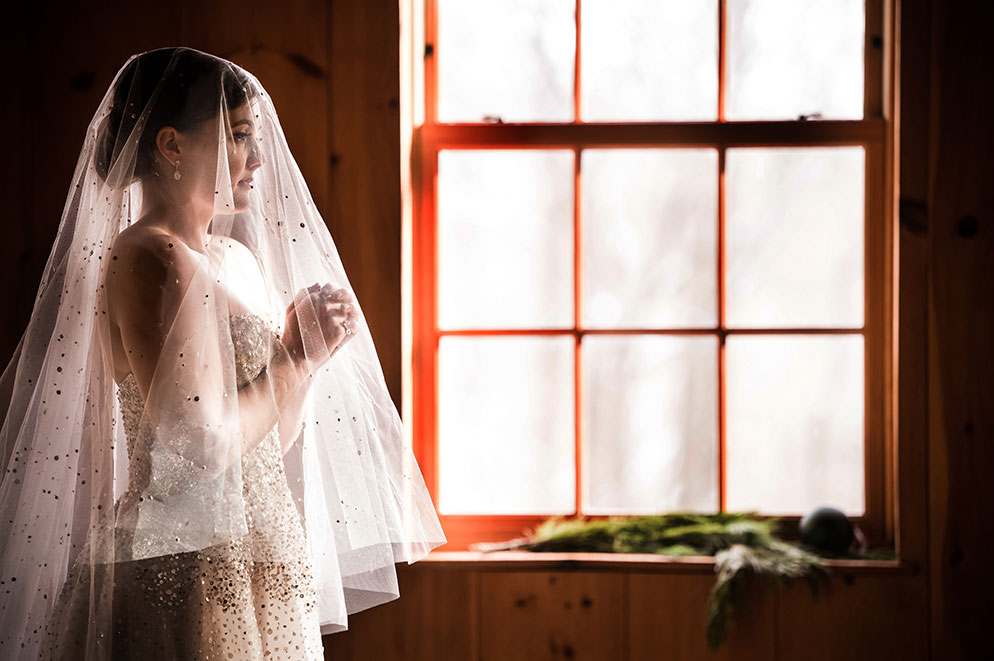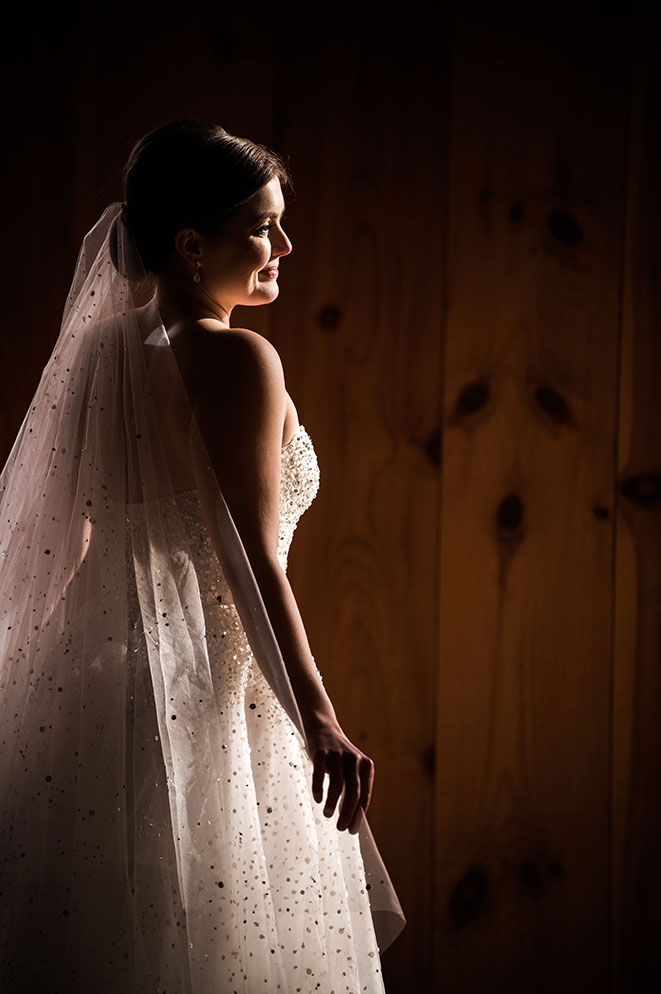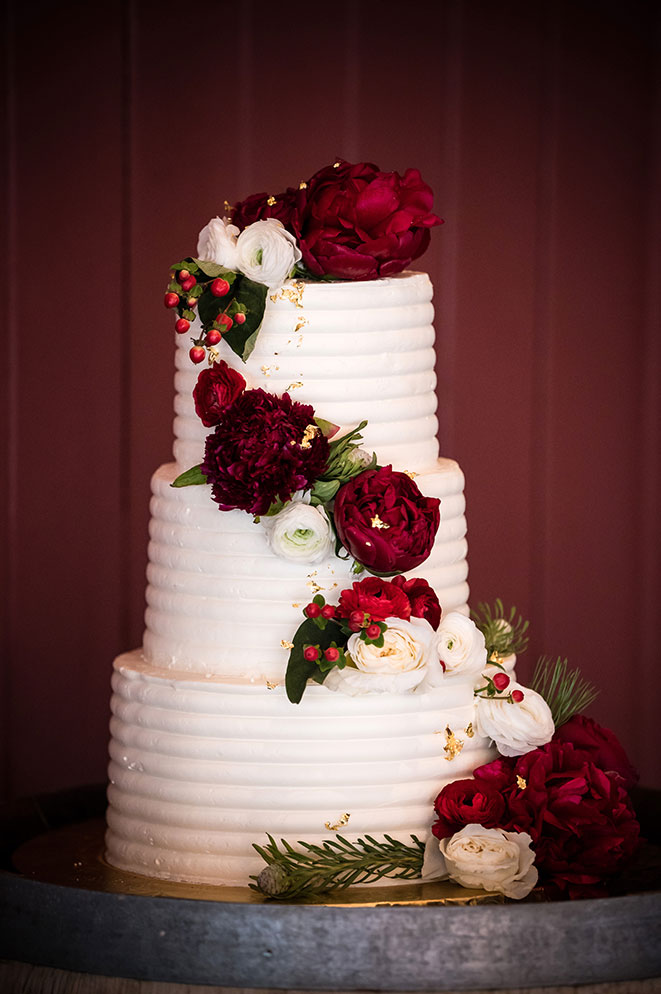Nikon's Eye AF: The Key to Compositions With Confidence
Cliff Mautner brings the Z 6 and Z 6II to a wedding
A "see it, have to get it" moment. "Even in profile, through a veil, with the contrast of the window, the Z 6II's Eye AF locks on and stays on." Z 6II, NIKKOR Z 70-200mm f/2.8 VR S, 1/320 second, f/2.8, ISO 1000, manual exposure, Matrix metering.
Cliff Mautner picked up on the Z system right away. We knew he would.
Cliff, you see, practices a personal pragmatism. His first reaction when informed of new or improved technology is along the lines of, Yeah, okay, but what will it do for me and the way I work?
So we figured that first off, the lure of a lighter, smaller Nikon-system camera was impossible for him to resist. He's been a pro photographer for 37 years, moving from photojournalism to photojournalism-styled wedding photography, and "lighter and smaller" made perfect and practical sense. So did the "see it now" nature of a Nikon mirrorless system. He pretty quickly chose the Z 6 as a member of his wedding kit.
"The wonderful thing about this camera and its effective Eye AF is that it's able to focus on the eye even with the distraction of a veil, even though she's glancing down. This was right before the ceremony, and she's waiting to walk down the aisle. The look, the body language, everything is real; there was no posing." Z 6II, NIKKOR Z 70-200mm f/2.8 VR S, 1/320 second, f/4.5, ISO 3200, manual exposure, Matrix metering.
Then along came the Z 6II, and if you speak to Cliff—and we did—he'll be quick to tell you that his liking for two of its advanced features—low-light focusing capability and the outstanding performance and accuracy of its Eye-Detection AF—seemed custom-made for his style of shooting.
What Cliff wants is no more and no less than to get the picture he needs to get, and get it consistently. What the Z 6II offered was an edge: a greater assurance of capturing what he terms "the compulsory moments"—the ones that happen only once during a wedding ceremony and reception.
A family heirloom in a close-up. "The bride asked for the photo," Cliff says, "and whenever I see a sentimental item I'd rather have the bride hold whatever it is than simply put it on a table. I want to show the item's precious nature, and the bride's hands do that." Z 6, NIKKOR Z 24-70mm f/2.8 S, 1/200 second, f/4, ISO 500, manual exposure, Matrix metering.
Composition with confidence, as Cliff knows that Eye AF is going to lock onto the eye and stay there even if he makes slight composition adjustments, which he did for this image of the bride. Z 6II, NIKKOR Z 70-200mm f/2.8 VR S, 1/1250 second, f/3.2, ISO 320, manual exposure, Matrix metering.
So when he heard about the Z 6II and its second-generation improvements, he took one along at the first opportunity. "The whole reason for me to want to try this camera, the thing that makes this camera different and what I wanted to check, was the low-light focusing," he says. "The thing about wedding photography is having absolute confidence in low-light situations. There are compulsory, fast-moving moments—a first dance, a parent dance, a blessing, a toast—that you just can't miss." There are also quieter, more contemplative moments that come and go in fractions of seconds.
When a camera came along that claimed superior performance overall, he put it to the test.
The bride awaits the first dance. "It was a candid moment," Cliff says. "I noticed some light striking her and liked the interesting light/shadow play. There's a lot of contrast here, and that's what this camera is superbly capable of capturing. It locks on, and I shoot." Z 6II, NIKKOR Z 70-200mm f/2.8 VR S, 1/1000 second, f/2.8, ISO 1000, manual exposure, Matrix metering.
Aisle Be Seeing You
We'll get right to his judgment. "The most compelling reasons for someone to upgrade to a Z 6II are the low-light focus improvements and the Eye AF, which is really remarkable: It instantly activates, and locks onto the eye—not the eyelash, but the eye."
He offers a quite specific example, one that he faces at almost every wedding. "At the recessional, where the bride and groom and the bridal party are moving toward me, and I'm firing multiple frames as I'm walking backwards, Eye AF is able to track and continuously maintain accurate focus. And not only that—I can also change the focal length on the zoom to determine the composition and what's included in the frame as I'm moving, and the Eye AF continues to track. That's pretty amazing: once the Eye AF has locked on, I can make adjustments to the composition and it stays locked on."
Ultimately, the key element here, and one that Cliff stresses, is reliability. "I know what the camera will do when I make my choices in a given situation."
One of his choices is the 70-200mm Z NIKKOR that he matches with the Z 6II for many of his wedding photos. It's a lens about which he says, "The sharpness and contrast is like nothing I've seen before."
Which, considering his 37-year-career experience and his preference for the practical, is saying something.
Wedding couples expect the cake shot—it's required, but in this case Cliff's best chance at it without people around or a fork in view was in a rather dimly-lit area. When we noted that the ISO was pushed to 4000 for this shot, Cliff corrected us: "That's not pushed; 4000 is the new 400." (Bet you thought we ran this photo so we could say, "The Z 6II takes the cake.") Z 6 II, NIKKOR Z 70-200mm f/2.8 VR S, 1/500 second, f/3.2, ISO 4000, manual exposure, Metric metering.











